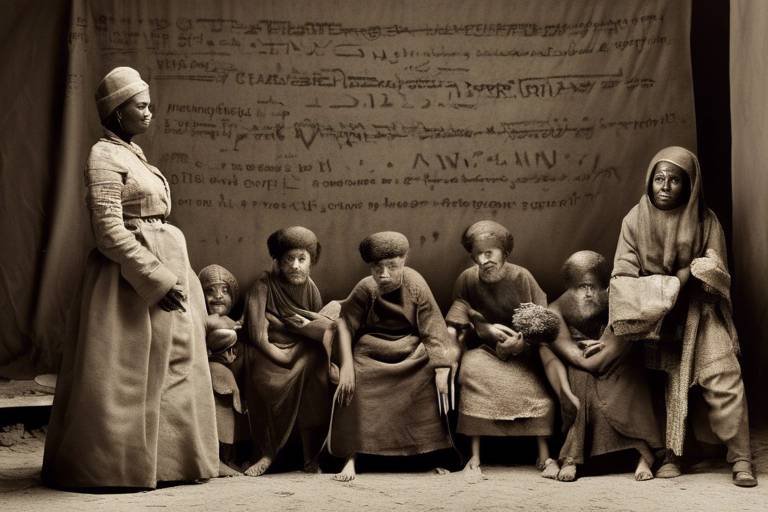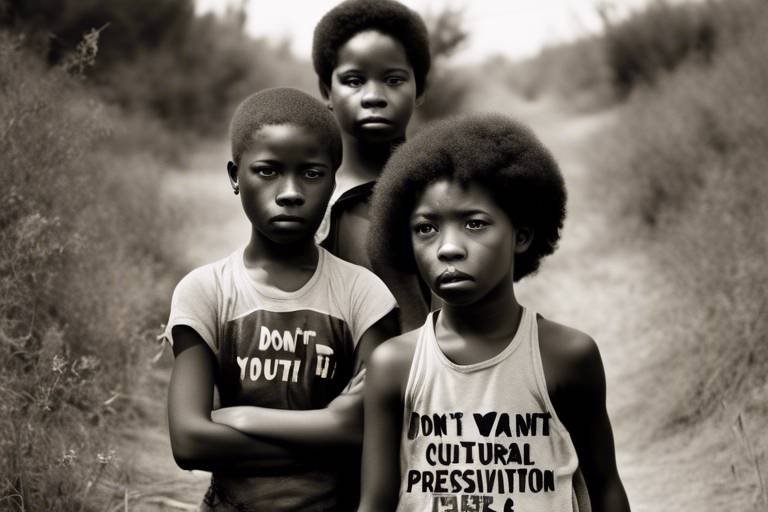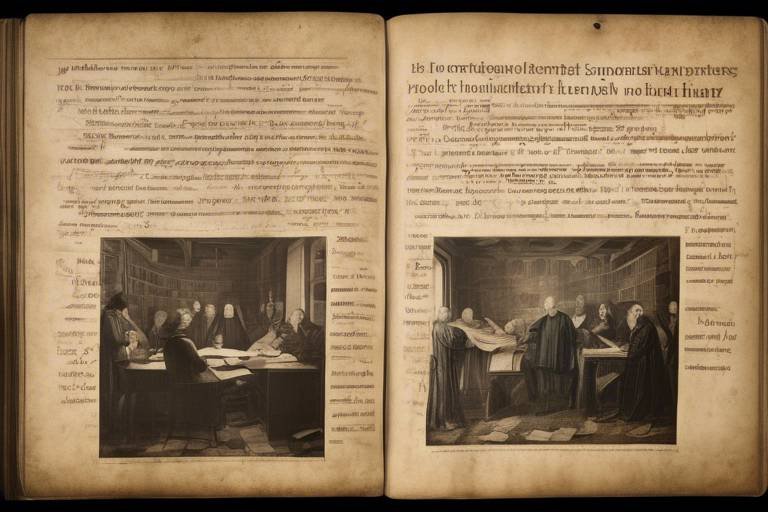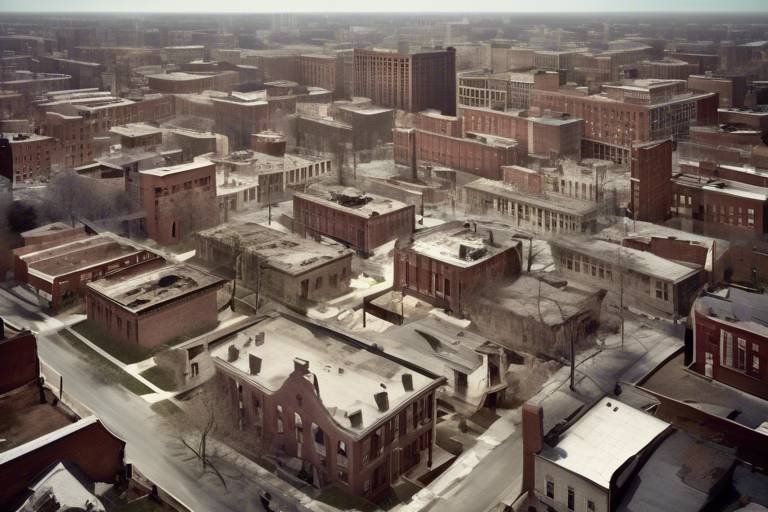The Role of Gender in Historical Narratives
The role of gender in historical narratives is a fascinating and complex aspect of how we perceive the past. Gender perspectives have played a significant role in shaping historical accounts, influencing the stories we tell about events, people, and societies. Throughout history, gender biases and stereotypes have influenced the way in which different genders are represented in historical narratives, often leading to a skewed and incomplete understanding of the past.
When analyzing historical narratives, it becomes evident that women have often been marginalized or overlooked in favor of highlighting the achievements and experiences of men. This imbalance in representation has contributed to a distorted view of history, where the contributions of women are downplayed or ignored. It is essential to recognize and acknowledge the significant roles that women have played in shaping societies and events throughout history.
Female historians have faced numerous challenges in their efforts to shape historical narratives. Biases and obstacles based on gender have hindered their work and influenced the stories that have been told. By embracing diverse perspectives and including the voices of women in historical research, we can gain a more comprehensive and accurate understanding of the past.
Masculinity and power dynamics have also played a crucial role in shaping historical narratives. The connection between masculinity and historical events has often led to a glorification of power and dominance, while marginalizing perspectives that do not align with traditional gender norms. Gender stereotypes have perpetuated certain narratives while silencing others, creating a distorted view of history.
By incorporating gender perspectives into historical research, we can uncover untold stories and perspectives that have been marginalized in traditional accounts. Examining history through a gender lens allows us to revisit narratives with a fresh perspective, shedding light on the experiences of individuals who have been historically overlooked or misrepresented. This approach offers a more nuanced and inclusive understanding of the past.

Gender Representation in History
Gender representation in history plays a significant role in shaping our understanding of the past. Throughout historical narratives, different genders have been portrayed in various ways, influencing how we perceive events and individuals from the past. These representations not only reflect the societal norms and values of the time but also impact the way history is interpreted and taught.
When examining historical accounts, it becomes evident that gender biases have often influenced the depiction of individuals and their actions. Men and women have been portrayed differently, with certain traits and roles assigned to each gender based on societal expectations. This gendered lens through which history has been viewed has shaped the narratives we are familiar with today.
Moreover, the representation of gender in history has not been limited to binary perspectives. Non-binary individuals, transgender individuals, and those outside the traditional gender norms have often been overlooked or misrepresented in historical accounts. It is essential to recognize and address these gaps in representation to present a more inclusive and accurate portrayal of the past.

Women in Historical Accounts
Women in historical accounts have often been overshadowed by their male counterparts, with their contributions and experiences downplayed or omitted entirely. This imbalance in representation has skewed our understanding of history, presenting a one-sided view that neglects the significant roles women have played throughout the ages. By delving deeper into historical narratives, we can uncover the stories of remarkable women who have shaped societies, influenced events, and left a lasting impact on the course of history.

Challenges Faced by Female Historians
Exploring the impact of gender on historical accounts, shedding light on how narratives have been shaped by gender perspectives and biases throughout history.
Analyzing how historical narratives have portrayed and represented different genders, influencing our understanding of past events and figures.
Examining the often overlooked contributions and experiences of women in historical narratives, highlighting the need for a more inclusive approach to history.
Female historians have long faced numerous challenges in the field of historical research. From battling gender biases and stereotypes to struggling for recognition and equal opportunities, the road to shaping historical narratives has been paved with obstacles for women in the field. Despite their invaluable contributions, female historians often find themselves marginalized and their work undervalued in comparison to their male counterparts.
Exploring the connection between masculinity, power dynamics, and historical narratives, and how these factors have influenced the depiction of historical events.
Investigating how gender stereotypes have shaped historical narratives, perpetuating certain narratives while marginalizing others based on gender norms.
Examining the significance of incorporating gender perspectives in historical research, and how this approach can offer a more comprehensive understanding of the past.
Exploring how intersecting identities, including gender, race, and class, have influenced historical narratives and the need for a more nuanced approach to history.
Discussing the importance of reevaluating historical narratives through a gender lens, highlighting untold stories and perspectives that have been marginalized in traditional accounts.

Masculinity and Power in History
The intertwining of masculinity and power has played a significant role in shaping historical narratives, often influencing how events and individuals are portrayed. Throughout history, the association between masculinity and power has been prevalent, with powerful figures often embodying traditional masculine traits such as strength, dominance, and assertiveness. This connection between masculinity and power has not only influenced the depiction of historical events but has also impacted the roles and representations of men in historical accounts.
In many historical narratives, the emphasis on masculine traits has led to the glorification of male figures in positions of power, while downplaying the contributions and experiences of women and individuals who do not conform to traditional gender norms. The association of power with masculinity has perpetuated a narrative that reinforces patriarchal structures and hierarchies, often overshadowing the diverse experiences and perspectives of individuals across different genders.
Moreover, the intersection of masculinity and power in historical narratives has also contributed to the reinforcement of gender stereotypes and biases. The portrayal of powerful men as heroic and authoritative figures, while depicting women as subordinate or passive, reflects the influence of gender norms on historical accounts. These stereotypes not only limit the representation of diverse gender identities but also shape our understanding of historical events through a narrow and often biased lens.
As we delve deeper into historical research, it becomes crucial to critically examine the role of masculinity and power in shaping narratives, acknowledging the impact of gender dynamics on historical accounts. By recognizing the influence of traditional gender roles on historical interpretations, we can strive towards a more inclusive and nuanced understanding of history, one that reflects the diverse experiences and contributions of individuals across the gender spectrum.

Impact of Gender Stereotypes
Gender stereotypes have played a significant role in shaping historical narratives, often influencing how different genders are portrayed and perceived in the context of history. These stereotypes have perpetuated certain narratives while marginalizing others, creating a biased representation of historical events and figures. For centuries, traditional gender norms have dictated the roles and expectations of individuals based on their gender, leading to a distortion of historical accounts that reflect these societal biases.
One of the key impacts of gender stereotypes on historical narratives is the reinforcement of gender roles and hierarchies, where certain traits or behaviors are associated with specific genders. This has led to the exclusion of diverse perspectives and experiences from historical records, as narratives have been constructed through a limited and often skewed lens. As a result, the contributions and achievements of individuals, especially women and marginalized genders, have been overlooked or downplayed in mainstream historical accounts.
Moreover, gender stereotypes have influenced the interpretation of historical events, shaping the narratives in a way that aligns with preconceived notions of masculinity and femininity. This has perpetuated a binary view of gender that fails to capture the complexity and diversity of human experiences throughout history. By reinforcing rigid gender norms, historical narratives have reinforced inequalities and biases, further entrenching the marginalization of certain groups in the retelling of history.

Gender Perspectives in Historical Research
When delving into the realm of historical research, it becomes evident that gender perspectives play a crucial role in shaping our understanding of the past. By incorporating gender analysis into historical research, scholars can uncover hidden narratives and provide a more comprehensive view of historical events.
Gender perspectives in historical research involve examining how gender roles, identities, and power dynamics have influenced the course of history. By analyzing historical events through a gender lens, researchers can reveal the often overlooked contributions of women, the impact of masculinity on power structures, and the intersectionality of gender with other social identities.
Moreover, incorporating gender perspectives allows historians to challenge existing gender stereotypes present in historical narratives. By questioning traditional gender norms and biases, researchers can offer a more nuanced and inclusive interpretation of historical events, shedding light on marginalized perspectives and untold stories.
Through the integration of gender perspectives in historical research, a more holistic and accurate portrayal of the past can be achieved. By recognizing the significance of gender in shaping historical narratives, researchers can move towards a more balanced and diverse representation of history, enriching our understanding of the complexities of the human experience across time.

Intersectionality in Historical Narratives
Intersectionality in historical narratives refers to the interconnected nature of social categorizations such as gender, race, and class, and how these overlapping identities shape individuals' experiences and perspectives throughout history. By acknowledging the complexity of these intersecting identities, historians can uncover hidden stories and understand historical events from a more inclusive and diverse viewpoint.

Revisiting History through a Gender Lens
When we look back at history through a gender lens, we are not just revisiting the past; we are uncovering hidden stories and perspectives that have long been overshadowed by dominant narratives. By examining historical events, figures, and movements through the prism of gender, we can gain a deeper understanding of the complexities and nuances that have shaped our collective history.
Imagine history as a vast tapestry, woven together by threads of different colors and textures. Each thread represents a unique perspective, a voice waiting to be heard. When we focus on gender as a central thread in this tapestry, we begin to see patterns and connections that were previously invisible. Women's experiences, contributions, and struggles come to the forefront, challenging traditional narratives and expanding our knowledge of the past.
Through a gender lens, we can interrogate the power dynamics that have influenced historical accounts. We can question why certain voices were amplified while others were silenced. By acknowledging the impact of gender on historical narratives, we invite a more inclusive and diverse understanding of the past, enriching our collective memory with untold stories and perspectives.
Revisiting history through a gender lens is not about rewriting the past, but rather about reevaluating it with a critical eye. It is about recognizing the limitations of existing narratives and striving for a more balanced and nuanced portrayal of historical events. By embracing a gender-sensitive approach to history, we can bridge the gaps in our knowledge and honor the voices that have long been neglected.
Frequently Asked Questions
- What is the significance of gender in historical narratives?
Gender plays a crucial role in shaping historical accounts by influencing perspectives, biases, and the portrayal of different genders throughout history. Understanding the impact of gender in historical narratives is essential for gaining a more comprehensive view of the past.
- Why is it important to include women in historical accounts?
Women have often been overlooked in historical narratives, despite their significant contributions and experiences. Incorporating women in historical accounts is vital for a more inclusive and accurate representation of history, highlighting diverse perspectives and stories.
- How do gender stereotypes affect historical narratives?
Gender stereotypes have a profound influence on historical narratives, shaping the depiction of events and figures based on societal norms. These stereotypes can perpetuate certain narratives while marginalizing others, emphasizing the need to critically examine and challenge gender biases in history.
- What is the role of intersectionality in historical research?
Intersectionality, the interconnected nature of social identities such as gender, race, and class, significantly impacts historical narratives. Understanding how intersecting identities shape historical accounts is crucial for a more nuanced and comprehensive approach to studying the past.
- Why should history be revisited through a gender lens?
Reevaluating historical narratives through a gender lens is essential for uncovering untold stories and perspectives that have been marginalized in traditional accounts. This approach allows for a more inclusive and diverse representation of history, shedding light on overlooked voices and experiences.



















